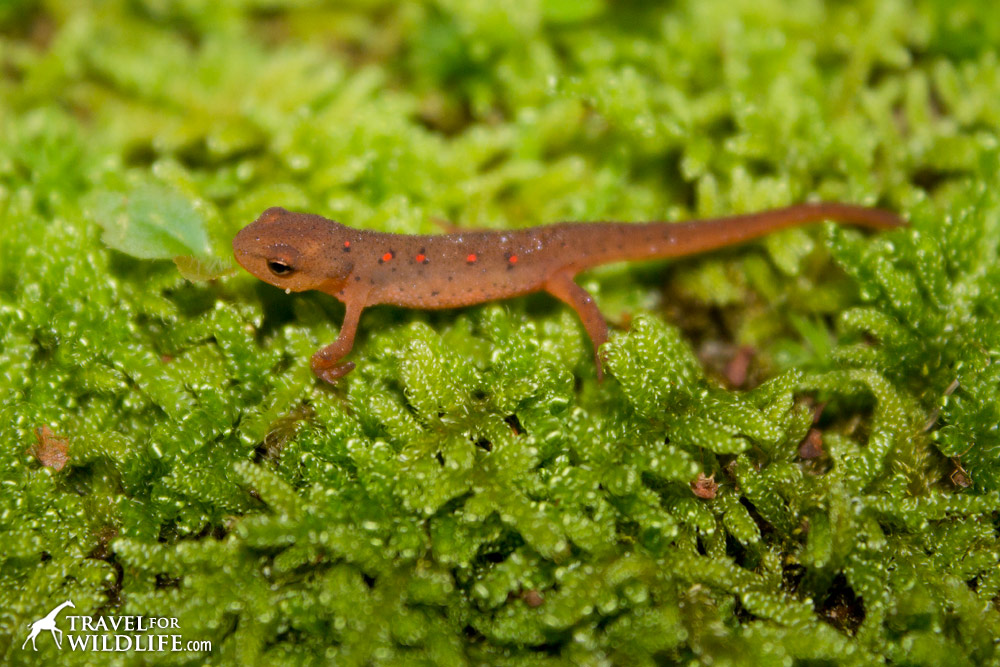We’ve been camping for the past few days at one of our favorite places in the Pisgah National Forest in North Carolina. We take afternoon hikes and in the evening we take little strolls to listen to the barred and screech owls. It is then that we notice a huge number of squashed salamanders. Lots of them get killed on these roads and it is not a big surprise since the Smoky Mountains are considered the salamander capital of the US (we are only 20min away) and now is the time when the little juveniles disperse.
So now our evening walks are about getting the little salamander and newt juveniles out of the road and placing them in the forest litter off to the side. But sometimes it is not easy to see these tiny salamanders. The one on this photo above was just over an inch long! I am not even sure how Hal even saw this red-spotted eft. What is an eft? An eft is a newt juvenile.
Life Cycle of a Red-Spotted Newt
The red-spotted newt has a very interesting life cycle. The aquatic larvae transform into a bright red juvenile, then spend several years on land as an eft (up to seven years!), then later in life come back to the water again to breed as an adult. But instead of redeveloping the gills they had as larvae, they spend the rest of their lives breathing through their lungs at the surface of the water.
After it transforms from a larvae, the new eft turns to a deep reddish orange. They present red spots (even brighter than their dry orange granular skin) edged in black down each side of its back. Efts are very bold and can be seen during daylight, especially after rains, which is when we’ve seen them most frequently. The efts wander through the forest, up and down ridges, occasionally reaching elevations up to 3,200 ft!
So if you are out and about watch your step!
The post Red-Spotted Newt Eft appeared first on Travel For Wildlife .


